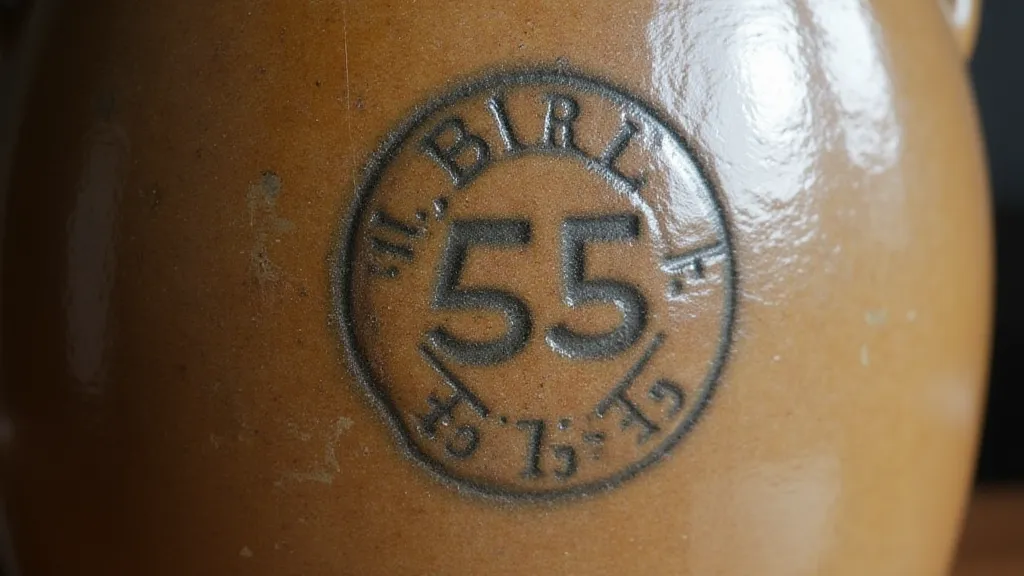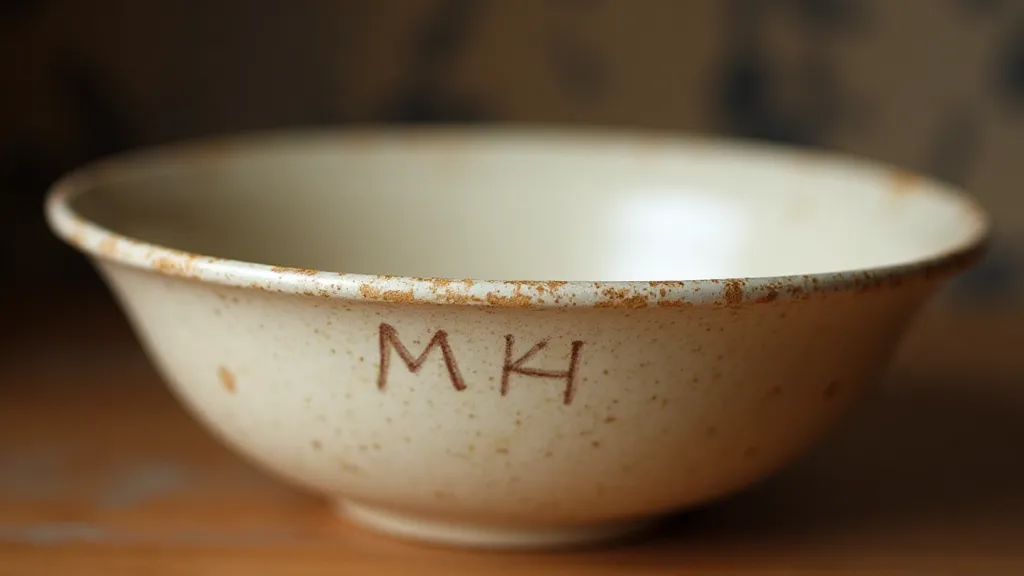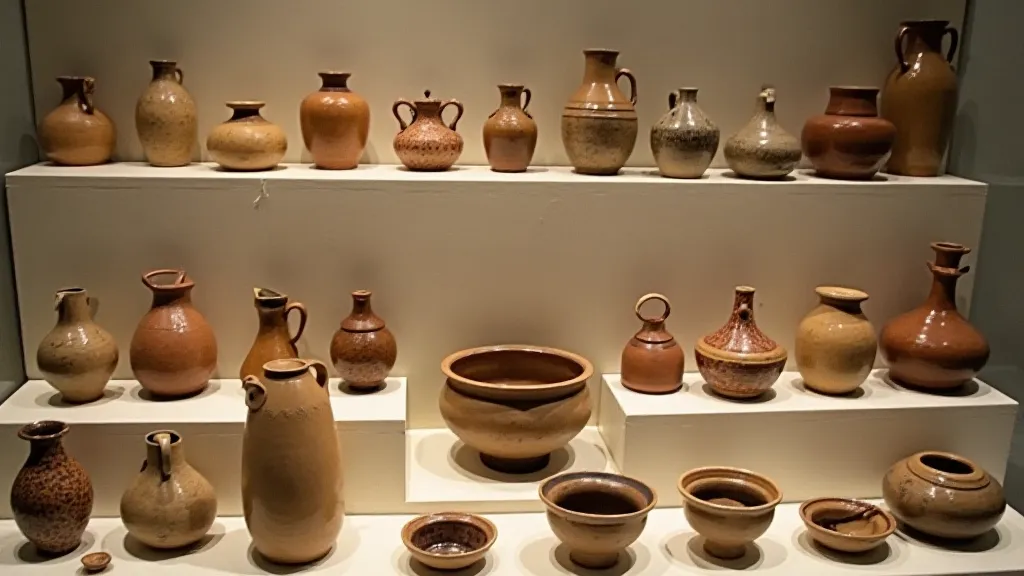The Potter's Mark: Decoding Regional Pottery Signatures
There’s a certain magic in holding an antique piece of pottery. It’s more than just clay fired in a kiln; it's a tangible link to the past, a whisper of lives lived and skills honed. Imagine, if you will, the potter’s hands, shaping the clay, feeling its responsiveness, coaxing it into form. That connection, that story, isn’t always visible, but often, it's subtly imprinted – not just in the form itself, but in the markings, the stamps, the decorative elements that serve as the potter’s signature. These aren’t merely identifiers; they are narratives etched into the very substance of the object.
My own fascination began with a simple, cream-colored bowl, found tucked away in my grandmother’s attic. It was unassuming, almost plain, but a faint, incised “M.H.” circled its base. That seemingly insignificant combination of letters unlocked a curiosity that has led me down a winding path of regional pottery investigation. It wasn't about rarity or value at first; it was about the people behind the clay.
The Language of Marks: A Regional Dialogue
The markings on pottery aren’t universal. They vary dramatically by region, reflecting local traditions, available materials, and the evolution of pottery-making techniques. Understanding these regional nuances is key to appreciating the true story of a piece.
Take, for example, the distinctive stoneware of the Ohio River Valley, particularly prevalent in the 19th century. Many pieces bear stamped marks – often just a surname – indicating the potter's workshop. These weren’t necessarily boasting declarations; they were crucial for a thriving market system. Customers relied on recognizing a potter's hallmark to guarantee quality. The simpler the mark, the more likely it signified a workshop catering to a wider customer base. More elaborate signatures, often including details about the potter's location or specialization, indicated a more bespoke, individualized offering.

Further south, in the Appalachian region, particularly in North Carolina and Tennessee, you’re more likely to encounter incised marks – a potter’s initials or a simple geometric design scratched into the clay before firing. These marks often lack the formality of a stamped signature, lending a feeling of intimacy and connection to the maker. The materials used in Appalachia, often locally sourced clays and glazes, contributed to a distinctive rustic aesthetic, reflected in the often imperfect, but undeniably soulful, appearance of the pottery.
Moving eastward, the Dutch pottery of New York’s Hudson Valley presents another fascinating chapter. The influence of Dutch craftsmanship is evident in the meticulous detailing and often a restrained elegance. Marks on these pieces might be stamped or impressed, reflecting a desire for both identification and a signal of quality and origin, important given the historical trade routes and the importance of regional identity.
Beyond the Name: Decoding Decorative Elements
The potter's mark isn't always a name or a symbol. Often, the decoration itself acts as a signature. Consider the intricate sgraffito work found on early Pennsylvania German pottery. Sgraffito involves scratching through a layer of slip (a clay-water mixture) to reveal a contrasting layer of clay beneath. These weren’t simply decorative flourishes; they represented folk narratives, religious symbols, and family histories, painstakingly rendered by skilled artisans. The patterns, even if seemingly simple, spoke volumes about the potter's understanding of their community and their artistic expression.
Similarly, the distinctive redware pottery of the South often features hand-painted designs – flowers, animals, and geometric patterns – that act as a visual signature. The style and quality of these decorations could reveal the potter’s skill and the region’s artistic influences. These pieces were often made for everyday use, but the care and artistry put into their decoration reflected a deep appreciation for beauty and craftsmanship, even in the simplest of objects.
The Story of “M.H.”: A Personal Discovery
Returning to that initial bowl from my grandmother’s attic, the mystery of “M.H.” consumed me for years. Local historical societies, online forums, and countless hours of research eventually led to a breakthrough. “M.H.” turned out to be Matthias Hoffman, a potter who operated a small workshop in southeastern Pennsylvania in the early 20th century. He wasn’t a nationally renowned potter, but a local artisan whose work served his community. Discovering his story – learning about his family, his business, and his contribution to the local economy – transformed that simple bowl from an antique into a connection to a real person, a fellow craftsman.

His pottery wasn’s as perfectly symmetrical as factory-made pieces, and there were often imperfections in the glaze – evidence of the potter’s hand. But those imperfections are what make it beautiful; they are marks of authenticity, testaments to the human touch.
Appreciating the Legacy
Collecting regional pottery isn't just about acquiring beautiful objects; it's about preserving a vital part of our cultural heritage. Each piece tells a story – a story of innovation, adaptation, and resilience. By learning to decode the potter’s mark, we can deepen our understanding of the communities that created them. Even appreciating the slight variations in glaze thickness, or the slight imperfections in throwing, is an active form of acknowledgement of the human skill involved.
Restoration is a delicate process. While stabilizing fragile pieces is vital, striving for an original appearance is key. Cleaning should be minimal, focusing on removing surface dirt. Avoid harsh chemicals or techniques that could damage the original glaze or markings. The goal is not to make the pottery look new, but to preserve its character and integrity, allowing its story to continue to be told.

So, the next time you encounter a piece of regional pottery, take a moment to examine its markings. Look beyond the surface. Consider the hands that shaped it, the community that nurtured it, and the story it has to tell. You might be surprised by what you discover. The potter's mark isn’t just a signature; it’s an invitation to connect with the past.





